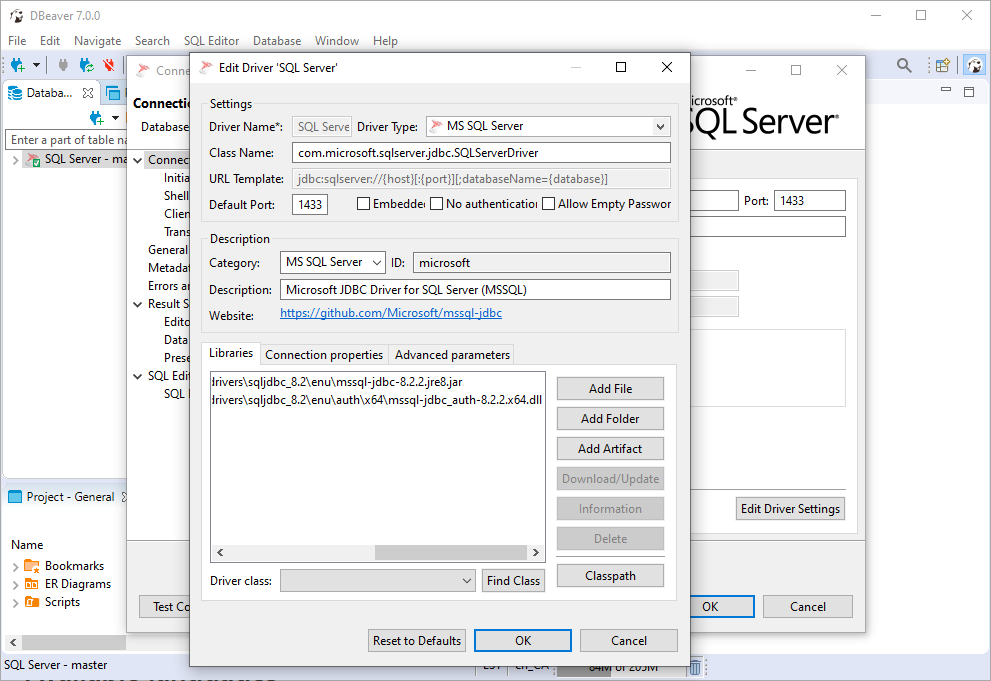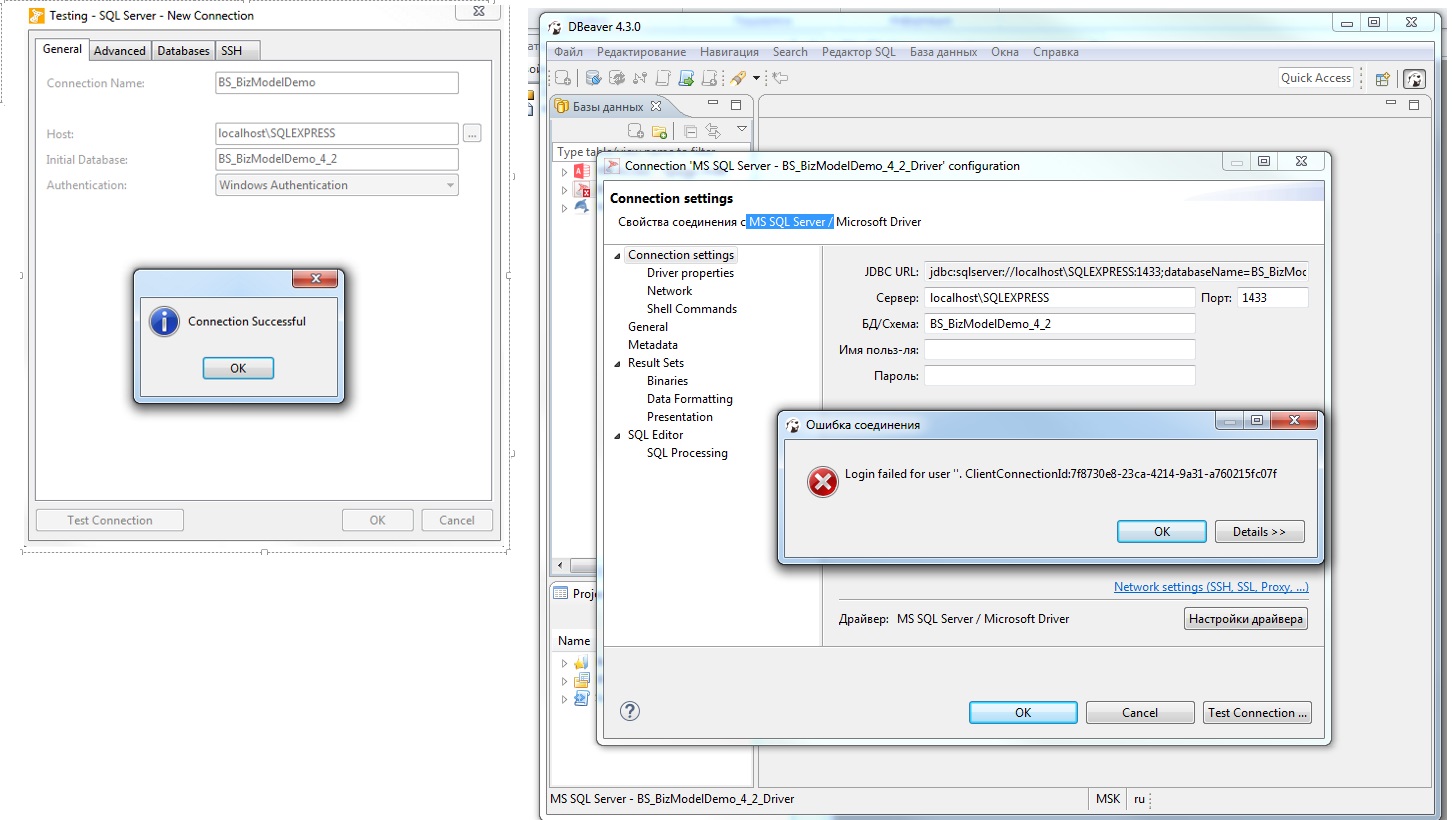

- DBEAVER SQL SERVER HOW TO
- DBEAVER SQL SERVER INSTALL
- DBEAVER SQL SERVER DRIVER
- DBEAVER SQL SERVER FULL
DBEAVER SQL SERVER HOW TO
This procedure will explain how to run SQL queries or scripts in your database using DBeaver. Once you have established your connection, you can now begin to work with the data in your database using DBeaver.
DBEAVER SQL SERVER DRIVER
To remove a driver, select the driver from the list, and click Remove.Edit the driver according to the parameters specified in Step 5 above.The Create new driver dialog is displayed. To create a driver of your own, click New.
DBEAVER SQL SERVER FULL
It is much more convenient when the sample URL is specified - in this case the connection wizard will require only valuable connection properties (host name, database name, etc).įor a full breakdown of the available driver editing options, in the Menu bar, go to Help | Help Contents | DBeaver Help | Manage Connections | Driver editor dialog.

DBEAVER SQL SERVER INSTALL
Click Yes to download and install the selected driver.To install a database driver, double-click a driver from the list.In the view's toolbar, click the Driver Manager icon.The driver manager dialog allows you to create, delete and edit driver descriptions. Elements in the navigator view can be opened/edited/deleted/etc - possible additional actions are accessible through the context menu and/or toolbar.Ī database driver is a third-party library which provides the ability to work with specific database engines. Generally, connections contain catalogs, catalog contains schemas, schemas contain tables, indexes, and procedures. Expand the connection folders to view existing databases and tables.Configure the name and type of your connection (Development, Test, Connection), and click Finish.ĭBeaver establishes the new connection, which is displayed in the Database Navigator view.To test the connection before establishing the connection, click Test Connection.The Finish connection creation dialog is displayed. Under the Advanced tab, you can configure advanced connections settings, e.g., Character Coding. User name/Password - User credentials.Database/Schema - Name of remote database/schema.If left blank then the default database port will be used. Otherwise its value will be automatically changed whene you change other connection settings. This field is editable only if the database driver doesn't have sample URL. These details may vary according to the database type, but they usually consist of the following parameters: Enter the general parameters for connecting to your database.The driver is installed, and the Connection Settings dialog is displayed according to the database type you selected. Click Yes to download and install the driver files for the selected database.If the driver for the connection type you selected has not been installed, you will be prompted to install it.



 0 kommentar(er)
0 kommentar(er)
